
|
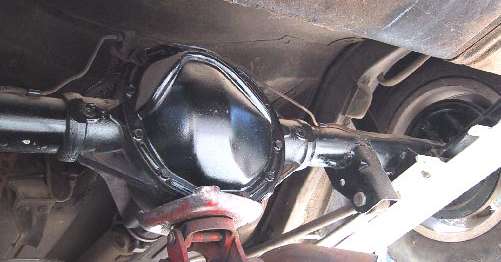
|
|

|
| C R G | CRG Reports | Exterior | Engine | 1967 Model ID |
| Numbers Decode | General Info | Interior | Transmission | 1968 Model ID |
| Drivetrain Decode | Options | Underhood | Chassis | 1969 Model ID |
CRG Research Report - © 1998-2019, Camaro Research Group
1967 Camaro Radius Rods
|
Reviewed by the CRG Last Edit: 13-Oct-2011 Previous Edits: 23-Jan-2010, 21-May-2004, 08-Aug-2000, 18-Aug-1999, 23-Dec-1998 Original Release: 24-Sep-1998 |

|

|
|

|
The question of which rod was applied to what model, and when, has often been a subject of much confusion. This report defines, as clearly as possible given the known data, the applications of each rod, and also discusses specific areas where data and information is lacking or weak. We encourage all 1967 Camaro owners with installed radius rods or rod brackets to please see the CRG Forum research post to contribute information about their vehicle, that we might continue to improve this report.
Table 1 illustrates, in a different format, these findings to date, model by model.
| Application | Early Use/Type mid-Dec to Mar-Apr |
Late Use/Type Mar-Apr to End-of-Model |
| L30 4-speed 1, 2 | round (proven) | rectangular (proven) |
| L48 3-speed | round (proven) | rectangular (assumed) |
| L48 4-speed 2 | round (proven) | rectangular (proven) |
| L48 Powerglide 3 | round (sporadic) | round (sporadic) |
| L35 3-speed | rectangular (assumed) | rectangular (assumed) |
| L35 4-speed | rectangular (proven) | rectangular (proven) |
| L35 TH400 | round (proven) | round (proven) |
| L78 4-speed | N/A | rectangular (proven) |
| Z28 4-speed 4 | round (proven) | rectangular (proven) |
|
||
The temporary fix implemented by Chevrolet engineering during the middle of the 1967 model year (until the 1968 model year suspension changes were implemented) was a form of traction bar, known as a "radius rod." The radius rod was a single, end-hinged, rigid link between the passenger side of the rear axle and the chassis.
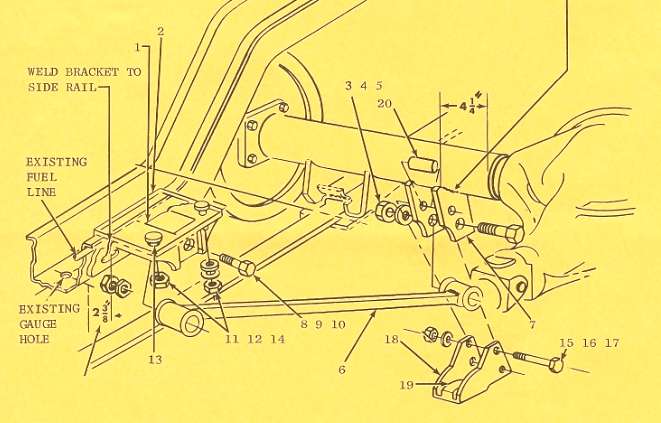
|
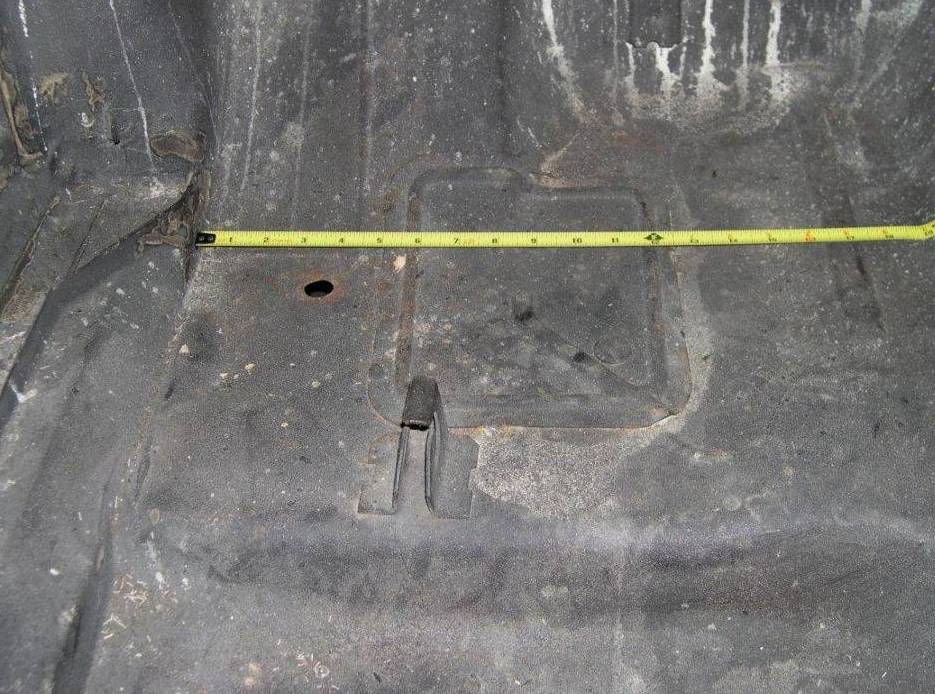
|
Both of the Camaro radius rod designs used a rigid steel rod with one end thru-bolted (hinged) to an axle bracket and the other end attached to a bracket bolted to the body (under the passenger-side rear seat). The first design was a round steel rod with a bushing at each end, part number 3914808. The second design improved upon the first and was a stiffer 1-inch by 1.25-inch rectangular rod, part number 3920234, with a modified axle bracket interface.
In the 1967 Camaro Assembly Manual, sheet B3 for RPO L48, dated 08-Nov-66, describes the first design version used with the round rod. The 07-Apr-67 revised sheet A8 for RPO L78 describes the second design version. The bracket welded to the rear axle was slightly modified for the 2nd design - it was wider with an extra hole added and the foward edge of the bracket was stepped. It is believed that all axle brackets were changed to the second design about the time the rectangular rod was introduced. A supplemental "stop" bracket that included a new rubber bumper was bolted to the bottom of the ears in the second design. For both designs, the body bracket was identical: part number 3914806. The body bracket was bolted to the rear frame rail and to the two studs that protuded through the floor.
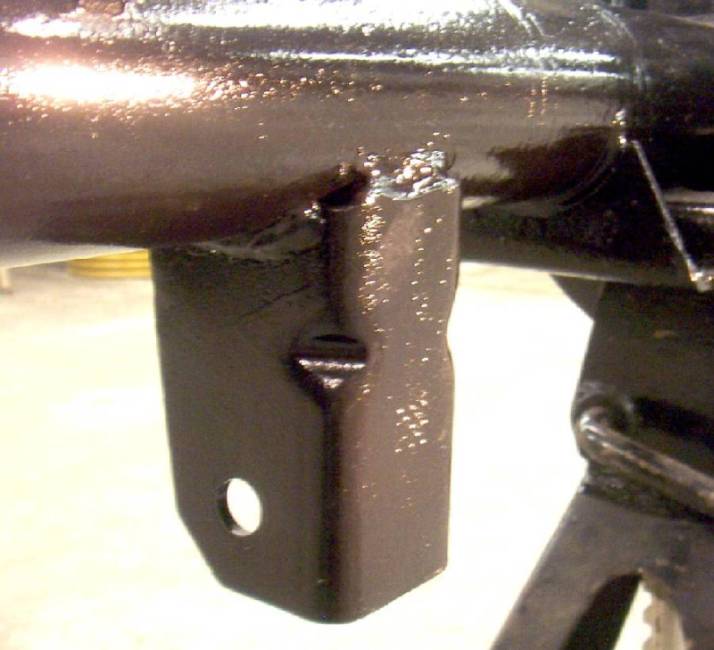
|
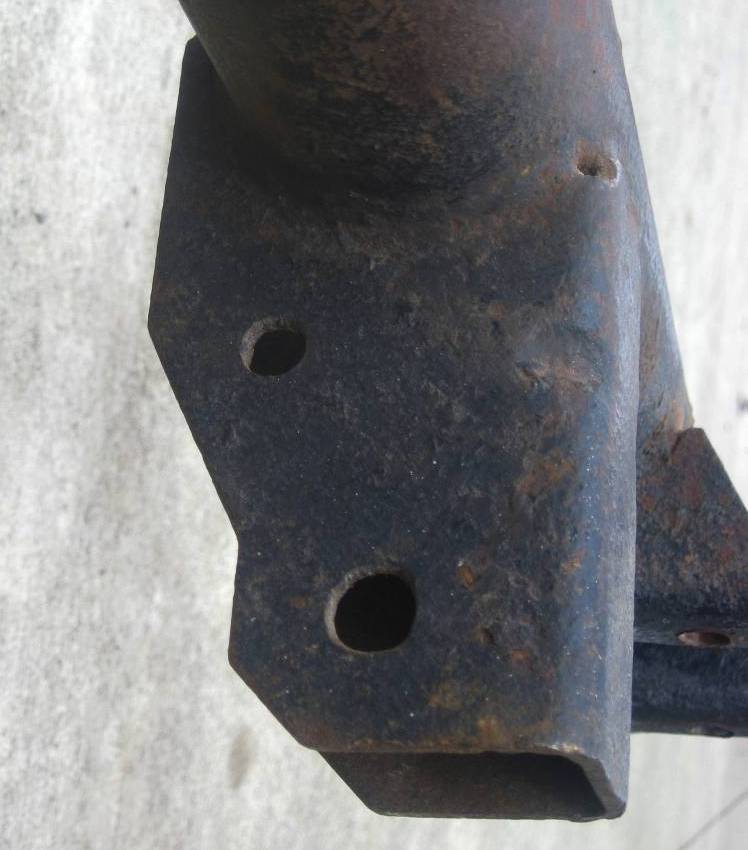
|
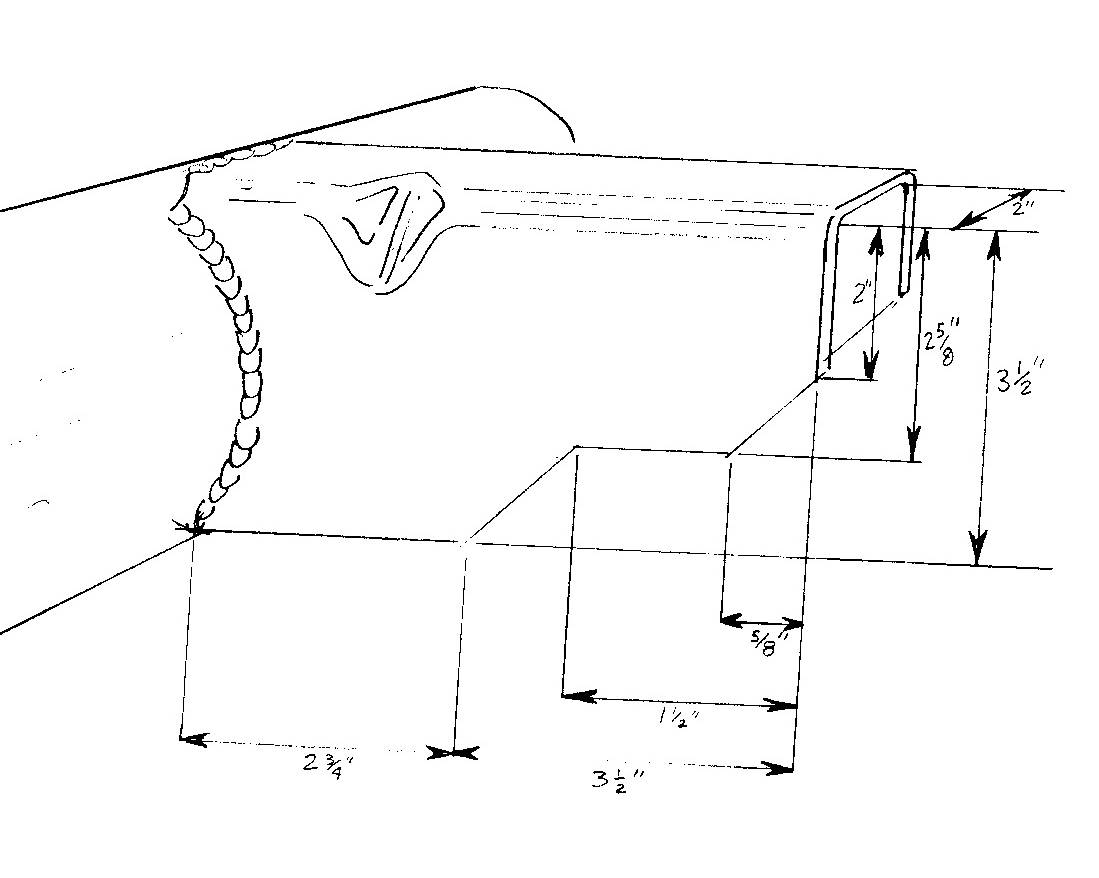
|
||
| First design axle bracket | Second design axle bracket | Sketch of second design axle bracket |
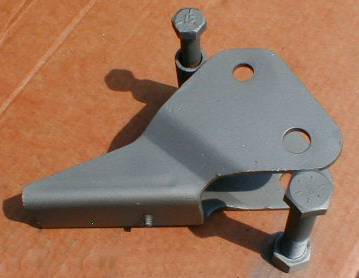
|
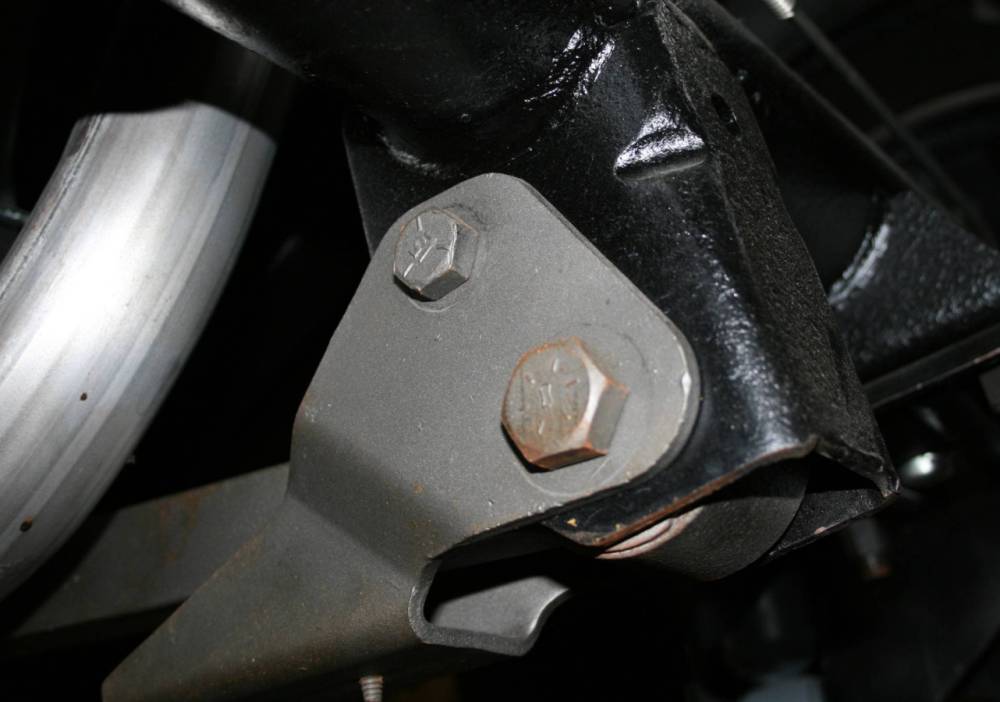
|
|
| Stop bracket for second design rod | Stop bracket - installed |
In contrast, the 1967 Pontiac Firebird included radius rods for both left and right sides of the axle on their higher performance models. The Firebird rod had an I-beam cross-section design (compare to the round or rectangular bars used on the Camaro). See Firebird rod - view 1 and Firebird rod - view 2 for pictures of the Pontiac-designed radius rod.
The replacement of the round rod with the rectangular rod on the Z28 appears to have occurred in March. The L48/M20 and L30/M20 cars transtioned to the rectangular rods about 04A at Norwood and later in April at Los Angeles (though the data on the Los Angeles cars is not definitive). Despite an assembly manual cancellation notice, the round rod remained in use for the rest of the year on L35/M40, as well as (sporadically) on L48/M35. GM documentation was used to derive these applications and actual vehicle data supports that information.
The one area of ambiguity is the L48/M35 model, which has sporadic radius rod application. There is no indication in the assembly manual that the traction bar was not applied to all SS-350 models, but other Chevrolet documentation indicate that it was not applied to the L48/M35 SS350/Powerglide combination. The CRG vehicle database provides insight in the actual usages. Of the approximately 100 L48/M35 cars built 012A or later for which we have rod-related data, 35% are reported with the round rod, and 5% with a rectangular (presumably) service retrofit. The remainder (60%) do not have a rod, but have one or more of the mounting brackets There is no obvious pattern of application. Even cars with optional performance axle ratios do not have the rod.
The rectangular rod documentation in the 1967 Assembly Manual was revised after initial release; CRG has only the revised version of this sheet and does not know what the initial release looked like. The 1967 Assembly Manual UPC L78 Sheet A2 table of contents lists the radius rod sheet in the initial release as for "RADIUS RODS" (note the plural). CRG speculation is that the initial release of this sheet included both round and rectangular rod configurations, and that the April revision to the sheet was for the purpose of eliminating the round rod configuration from this sheet.
Chevrolet Dealer Service Technical Bulletin 67-T-30, dated 12-May-67 (pdf file), indicates the round radius rod was actually implemented in production on 15-Dec-66. This same bulletin indicates that the second design went into production on 27-Mar-67. However, use in the L35/M20 pre-dates the production introduction date in the bulletin, since we have several L35/M20 datapoints from 02A to 03A, all of which have the rectangular rod.
It would appear that the 27-Mar-67 introduction date only applies to the L30 and L48 vehicles, which does match with vehicle data. The scope of Bulletin 67-T-30 is to specify retrofit instructions for the rectangular radius rod for L30 and L48 4-speed complaint vehicles, and therefore it makes sense that the information in the bulletin literally applies only to these vehicles.
Note also that Bulletin 67-T-30 includes a reference to "... vehicles built after December 15, 1966, with provisions for a radius rod." Note that this quote doesn't say "with a radius rod," but says with "provisions" for one - indicating that some vehicles had the brackets installed at the factory (the provisions) but without the rod in place.
A significant complication to the analysis of the radius rod applications is the rectangular radius rod service retrofit kit. This makes it a bit more difficult for us to be sure if a rectangular bar was factory installed or dealer installed. However, by comparison of the service replacement instructions with the original factory assembly instructions, it appears that there are three clues that should distinguish a service replacement rectangular bar from its factory brother:
Document
RPO Reference Status Date Notes
--- ---------- ------- ------- -----------------------------------
M40 67 AIM new dwg 26Aug66 M40 docs released include drawing with
M40 all radius rod ears on the axle indicating
that this change was contemplated even
at the beginning of production.
L48 67 AIM new dwg 08Nov66 L48 docs released for round rod
L48 B3 (1st design).
Z28 67 AIM new dwg 09Nov66 Z28 docs released referring to L48 for
Z28 A2 round radius rod.
L35 67 AIM new dwg 30Nov66 L35 docs released referring to L48 for
L35 A2 round radius rod.
--- Bulletin start 15Dec66 Round rod (1st design) usage started in
67-T-30 prod production.
L30 67 AIM rev dwg 16Dec66 L30 docs revised to add radius rod
L30 A2 reference to L48. This was never revised
to delete the reference.
--- CRG database December Several mid-December-built L48 cars have a
round radius rod. Usage is not consistent.
--- CRG database 01B 01B Z28 car with round radius rod.
L35 67 AIM rev dwg 08Feb67 Reference to L78 radius rod added to
L35 A2 existing reference of L48 rod.
Z28 67 AIM rev dwg 08Feb67 Reference to L48 radius rod changed to
Z28 A2 L78.
--- CRG database 02A Several 02A L35/M20s exist with
rectangular rods.
L78 67 AIM new dwg 17Feb67 L78 docs released with reference to
L78 all "RADIUS RODS"- plural. Only sheets
A1-A6 released on this date. Remainder
released 23-Feb-67.
L78 67 AIM new dwg 23Feb67 Remainder of L78 sheets released, incl.
L78 A8 sheet A8 with initial L78 radius rod(s).
Note that L35 and Z28 have already
released docs referencing this.
M40 67 AIM rev dwg 17Feb67 M40 docs revised to change M40 axle part
M40 A3 number from 3910882 to 3920569. If this
was for the purpose of using the rect-
angular rod axle brackets, it didn't
materialize in actual cars. Done same day
as initial release of rectangular rod.
--- CRG database 03B 03B Z28 with rectangular radius rod.
--- Bulletin start 27Mar67 Rectangular rod introduced on assembly
67-T-30 prod line. Scope of this bulletin may be
limited to L30 and L48.
L34 67 AIM new dwg 30Mar67 L34 docs released referring to L48 or L78
L34 A2 for radius rods. The L34 was not released
in 1967 despite this documentation.
L35 67 AIM rev dwg 06Apr67 L35 docs reference to L48 radius rod
L35 A2 removed, leaving only the L78 reference.
Despite this, all L35/M40 used the
round rod.
L48 67 AIM cancel 06Apr67 L48 docs cancel round rod design sheet
L48 B3 dwg for L48 (and, implicitly, for L30).
However the round rod continues in
production.
L78 67 AIM rev dwg 07Apr67 L78 docs for sheet A8 on radius rod
L78 A8 "revised and redrawn". New release
shows only a rectangular rod.
|
|
|